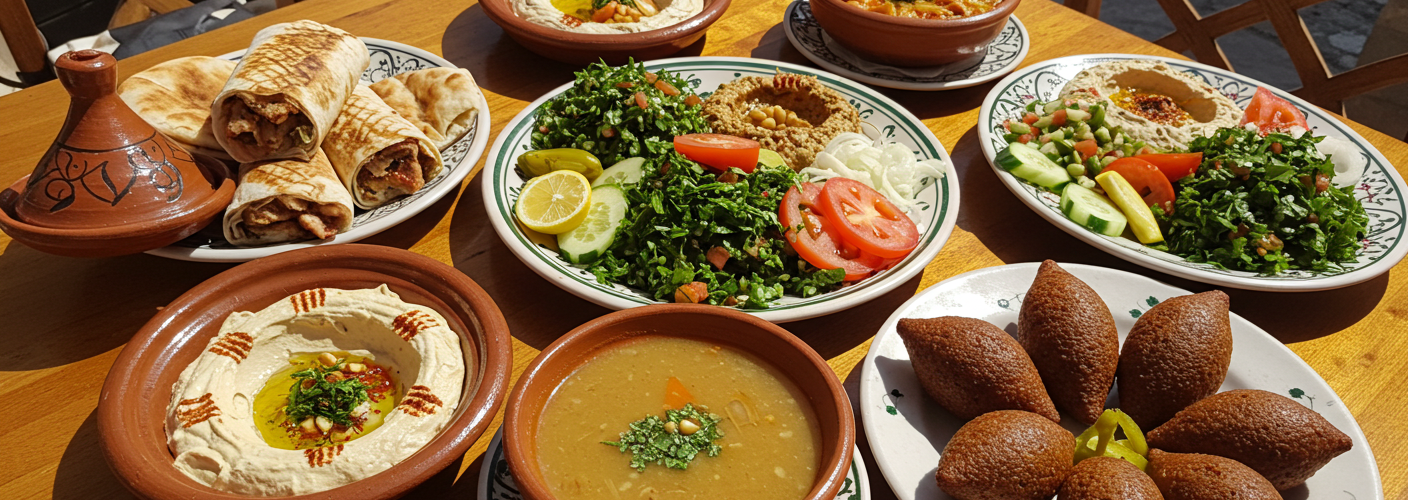Lebanese cuisine is a delightful amalgam of flavors, colors, and aromas that reflects its diverse cultural history. The rich culinary traditions of Lebanon have been shaped by centuries of historical influences from various civilizations, including the Phoenicians, Romans, Ottomans, and French. This melting pot of cultures has resulted in a vibrant food scene, making Lebanese cuisine beloved not only in Lebanon but also across the globe.
One of the defining characteristics of Lebanese food is its emphasis on freshness and bold flavors. The use of high-quality ingredients like olive oil, fresh vegetables, herbs, and spices is a hallmark of Lebanese cooking. At its core, Lebanese cuisine champions the concept of “mezze,” a variety of small dishes served as appetizers that allow people to share and enjoy a collective dining experience. These dishes often include hummus, tabbouleh, baba ghanoush, and kiblid, which are perfect for stimulating the palate and promoting conversation.
Hummus, made from blended chickpeas, tahini, lemon juice, and garlic, is perhaps the most famous representation of Lebanese cuisine. This creamy dip is a staple in many households and is typically served with warm pita bread. Similarly, tabbouleh—a refreshing salad made from finely chopped parsley, mint, tomatoes, and soaked bulgur—is lauded for its vibrant taste and nutritional benefits. The interplay of flavors in these dishes captures the essence of Lebanese cooking, where the freshness of ingredients takes center stage.
Another significant aspect of Lebanese food is its focus on grilling. Shawarma, a popular street food, consists of marinated meat cooked on a rotating spit and served in a wrap or with rice. The succulent flavors and enticing aroma make it a favorite among locals and visitors alike. Kebabs and kafta (minced meat skewers) are also grilled to perfection, often accompanied by a tangy garlic sauce that elevates the dish to new heights.
For those with a sweet tooth, Lebanese desserts are a must-try. Baklava, a rich pastry made of layers of filo dough filled with nuts and honey or syrup, is commonly enjoyed with strong Lebanese coffee. Maamoul, cookies filled with dates or nuts, are often served during festive occasions, showcasing the community’s spirit of sharing and celebration.
Lebanon’s agricultural bounty plays a crucial role in its food culture. The country’s fertile lands provide an array of fresh fruits, vegetables, and herbs. Freed from the constraints of commercialized food production, many Lebanese families grow their own produce, yielding an abundance of locally sourced ingredients that are showcased in their meals. This connection to the land and seasonality embodies the principle of sustainability in Lebanese cooking.
Dining in Lebanon is not just about food; it is an experience steeped in warmth and hospitality. Meals are often shared among family and friends, fostering a sense of community and belonging. The joyous act of gathering around a table laden with exquisite Lebanese dishes is a cherished tradition that reflects the country’s values of generosity and togetherness.
In conclusion, Lebanese cuisine is a celebration of life, embodying a culture rich in history, diversity, and, most importantly, flavor. From the enticing mezze to the extravagant desserts, Lebanese food offers a unique culinary experience that captures the heart and soul of Lebanon. Whether you’re a seasoned food enthusiast or a curious newcomer, exploring Lebanese cuisine promises a journey that delights the senses and leaves a lasting impression.




Add comment